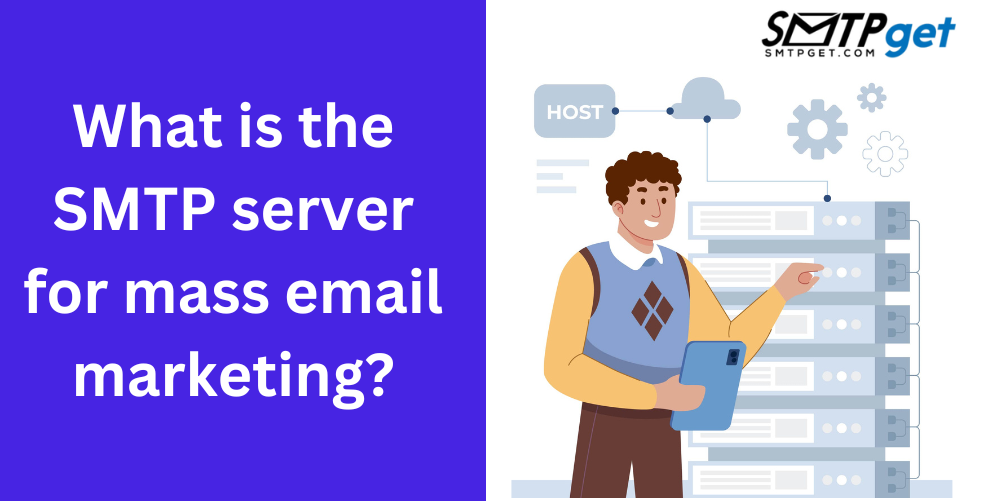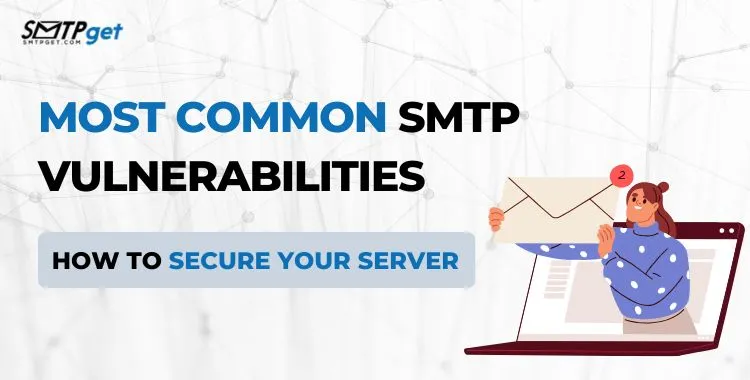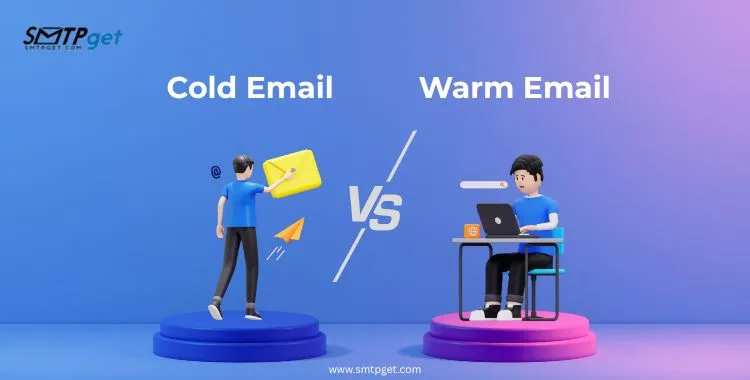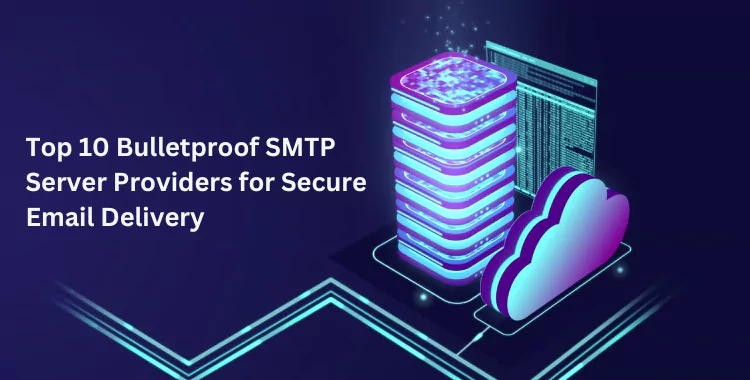Modern communication is incomplete without emails as it is in use personally as well as in professional life. Regardless of whether the message is being sent to a friend as a simple ‘hello’, or to a business partner stating your company’s decision, the delivery of the e-mail is important. And that’s why SMTP mail servers become particularly useful. So in this general guide, we will look at SMTP mail servers, how they function, and why SMTP server services are important when accurately delivering emails.
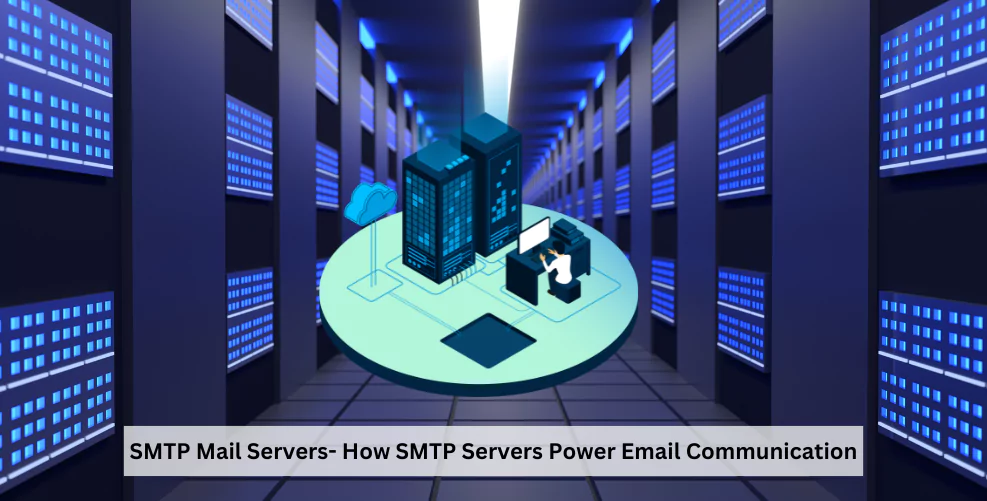
How does the SMTP Mail Server work for sending emails?
SMTP is the key component and foundation for most of the Bulk email service providers. It is the one that works at the senders’ end to convey the outgoing email messages from your mail client or application to the recipient’s SMTP mail server. It can be seen as the outreach service of the digital system where your message has to be delivered.
When you hit “send” on your email client, it communicates with your smtp service provider, providing the recipient’s address and the content of the message. The smtp mail server locates the recipient’s email server and forwards the message to it. This process happens seamlessly in the background, allowing you to send emails within seconds and increase email deliverability.
Why SMTP Mail Servers are Important?
SMTP servers are essential for the reliable and efficient delivery of emails. They act as the digital postmen, ensuring that your messages reach their intended recipients. SMTP server provider handles the transfer of outgoing emails from your device to the recipient’s email server, making communication across the internet possible. Without a non-suspended SMTP server, email communication would be unreliable and chaotic.

These servers also play a crucial role in email security, ensuring that only authorized users can send messages. In essence, SMTP mail servers are the backbone of email communication. A SMTP server is required to make sure that email messages get delivered over the network in the best way possible. They are the mediators, delivering your messages to the end users. SMTP Server Provider is involved in sending out emails from a device from the sender to the recipient’s email server which makes communicating across the internet possible.
It is clear that without a Bulletproof SMTP Server, electronic mail communication may become unstable and undeveloped. These servers are also used to provide security to messages sent by only the permitted people in a given organization. Thus one may safely conclude that SMTP Mail Servers are the lifeblood of e-mailing.
Setting Up an SMTP Mail Server
If you’re running your email system, setting up an SMTP Mail Service is important. This involves configuring your SMTP relay service to handle outgoing emails. There are several available family email server software: Postfix, Exim, and Microsoft Exchange, all of which have their distinct installation processes.
Choosing the right SMTP mail server depends on your specific needs. Small businesses may decide to use easier solutions and different organizations may require more complex and scalable solutions. One needs to take into consideration the measures of security, stability, and the volume of these emails.
SMTP Mail Server Authentication
SMTP authentication is another measure that relates to the protection of email communication. It is important in that it guarantees that all the emails sent through your mail smtp server are only from authorized persons. If a user doesn’t authenticate their account, then your server may be used by spammers or other malicious individuals.
There are several types of SMTP authentication some of them are username and password, SSL/TLS certificates, and OAuth. To ensure your smtp mail relay server is safe and secure, the use of correct forms of authentication must be applied.
What is an Email Server—and what is an SMTP server?
An email server is a part of the email network that is in charge of managing email and delivering it to the recipient. It performs the role of a postmaster, which organizes the traffic of messages in the communication system.
Mainly, an SMTP server for email marketing that is used in conjunction with the email marketing application is important for outgoing emails. When the user hits the ‘send’ button on the email client, it transmits details to the SMTP server including the intended recipient address and the body of the message. The PowerMTA SMTP server provider then forwards the email to the recipient server for final delivery.
Think of SMTP as the courier that secures your message reaches its targeted destination. It’s necessary for reliable email communication, as it follows established rules and protocols to transmit emails securely and efficiently. Understanding the role of both email and SMTP servers is key to catching how emails are sent and received.
Benefits of an SMTP Mail Server
Firstly, it ensures reliable and timely email delivery. Bulletproof SMTP Server acts as digital postmen, expertly routing your messages to their recipients, which is vital for both personal and business communication.
Another advantage is increased control and customization. When using an SMTP server, you can easily set the email to your desired preferences like creating user authentication, secure connection, and sending limits.
SMTP servers also improve security by enabling various security measures to be applied that prevent unauthorized access and spamming. Additionally, SMTP Mail Services can increase delivery ratios and hence your communications are less likely to be delivered to the junk mail folders.
In business, SMTP servers are a very crucial aspect, especially for sending emails that include transactional mail, marketing mail, and even general mail to give a company a professional touch.
Which SMTP Mail Server port is good to use?
SMTP uses specific ports to establish connections with smtp email server. The two most commonly used ports are 25 and 587. Port 25 is the default SMTP port, but it’s often blocked by internet service providers to prevent spam. Port 587, also known as the Submission port, is a more reliable choice for sending emails as it’s less likely to be blocked.
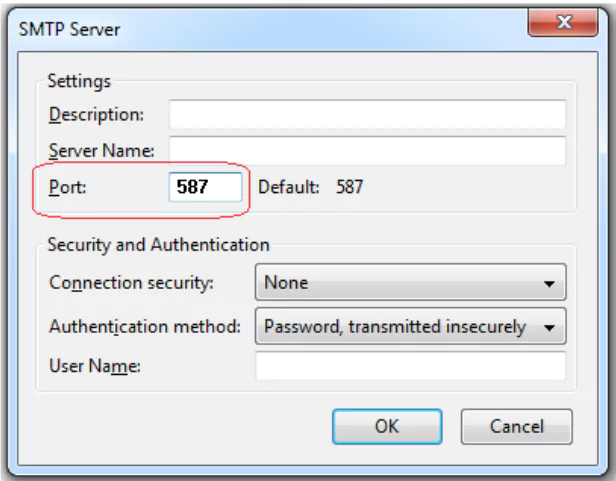
Choosing the right port depends on your email setup and requirements. If you’re facing issues email sending consider switching to port 587.
How to Secure Your Mail SMTP Server?
Security is a top priority when it comes to SMTP mail servers. Without proper security measures, your server can be vulnerable to various threats, including spamming, hacking, and unauthorized access.
To secure your SMTP mail server provider, consider implementing features like firewall rules, encryption (SSL/TLS), strong password policies, and IP address restrictions. Regularly updating and patching your server to send emails is crucial to address known vulnerabilities.
How to Troubleshoot SMTP Mail Server Issues?
SMTP issues can be frustrating, but they are not uncommon. Some common problems include email delivery failures, slow sending speeds, and authentication errors. Troubleshooting these issues requires a systematic approach.
Start by checking your server’s logs for error messages. Ensure that your DNS records are correctly configured, and your recipient’s server IP address isn’t blacklisted. Testing your smtp mail server using online tools can also help identify issues and provide solutions.
Mail SMTP Server vs. Other Email Protocols
SMTP is just one piece of the email puzzle. It works in coordination with other protocols like IMAP (Internet Message Access Protocol) and POP3 (Post Office Protocol version 3). While SMTP is responsible for sending emails, IMAP and POP3 handle receiving and retrieving emails, respectively.
The choice between these protocols depends on your email client and usage. IMAP is suitable for those who need access to their emails from multiple devices, while POP3 is more suitable for downloading and storing emails locally.
How SMTP Mail Server work for Businesses
For businesses, the SMTP Mail Server is the lifeline of email communication. It forms the foundation of corporate email systems, allowing employees to send and receive messages within the organization and with external parties.
Scalability is a crucial consideration for businesses. As the company grows, the SMTP Mail server must accommodate increasing email traffic. This requires selecting the right hardware or cloud-based solution and optimizing server configurations for performance.
Best SMTP Mail Server and Email Marketing
SMTP also plays a significant role in email marketing. Businesses use SMTP servers to send bulk marketing emails to their subscribers. However, it’s essential to comply with email marketing regulations, such as the CAN-SPAM Act, to avoid legal issues and maintain a positive sender reputation.
Using the best smtp mail server for email marketing allows for better control over email delivery and campaign performance tracking. It ensures that marketing emails are delivered to the intended recipients and that engagement metrics are accurately recorded.
Send an SMTP email with SMTPget
To send an SMTP email with SMTPget, start by specifying the recipient’s email address, subject, and the content of your message. You’ll also need to input the SMTP server details, including the hostname, port, and authentication credentials. Once these settings are in place, SMTPget takes care of the rest.
What sets SMTPget apart is its user-friendly design, and email templates, making it accessible for beginners and experienced users. It ensures that your email is routed correctly through the cheap smtp mail server and reaches the recipient’s inbox securely. Whether you’re sending a critical business proposal or a casual message to a friend, SMTPget streamlines the process, ensuring that your emails are delivered promptly and reliably.
Future of SMTP Mail Server
The future of SMTP is shaped by emerging trends and technologies that aim to enhance email communication in various ways. Here are some aspects to consider:
Enhanced Security Measures:
In response to the ever-present threat of email phishing and cyberattacks, the best smtp mail server is likely to incorporate more advanced security measures. This includes stricter authentication standards, email encryption, and improved anti-spam mechanisms to protect users from malicious emails.
IPv6 Adoption:
As IPv6 adoption continues to grow, SMTP will also need to adapt. IPv6 offers a larger address space and improved security features, making it a natural choice for the future of email communication.
Machine Learning and AI:
AI and machine learning algorithms are being employed to enhance email filtering, categorization, and personalization. SMTP servers of the future may leverage these technologies to better manage email traffic, reduce false positives in spam filters, and improve the overall user experience.
Efficiency and Scalability:
With the increasing volume of emails being sent globally, SMTP will continue to evolve to handle larger workloads efficiently. Future SMTP implementations may focus on optimizing resource usage, reducing latency, and improving scalability to meet the demands of users and businesses.
Interoperability:
The interoperability of SMTP with other email-related protocols and technologies will remain crucial. Ensuring that different email systems can communicate seamlessly is essential for the continued success of email as a universal means of communication.
Compliance with Regulations:
SMTP servers must stay updated with evolving email regulations and privacy laws, such as the General Data Protection Regulation (GDPR) and the California Consumer Privacy Act (CCPA). Compliance will be essential to avoid legal issues and maintain user trust.
User-Friendly Features:
User expectations for email services continue to rise. Future SMTP implementations may focus on delivering user-friendly features such as improved search capabilities, integrated communication tools, and enhanced mobile experiences.
Conclusion
SMTP mail servers are the unsung heroes of email communication, ensuring that messages are sent reliably and efficiently across the internet. Understanding how SMTP works, setting up a secure server, and troubleshooting common issues are essential for both individuals and businesses.
As email technology continues to evolve, SMTP will play a central role in shaping the future of digital communication. By embracing emerging trends, enhancing security, and prioritizing user experience, SMTP will remain a vital component of the digital landscape for years to come.


